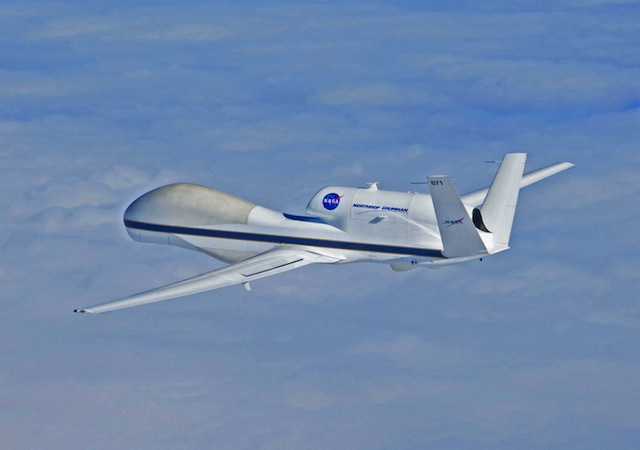The US National Oceanic and Atmospheric Administration (NOAA) plans to expand its use of unmanned air vehicles (UAV) to improve weather forecasting and better predict the behavior of dangerous storms.
It will spend $15 million over the next five years in an effort that will see the agency deploy NASA-owned Northrop Grumman Global Hawks on data-collection missions, according to Robbie Hood, director of NOAA’s unmanned aircraft system programme.
“NOAA will pick up those experiments next year and assimilate that data directly to weather models,” said Hood on 12 May during a session at AUVSI’s annual conference in Orlando.
It has partnered with NASA on data-collection efforts using two Global Hawks for about five years. But NOAA now plans to lead the effort, using the aircraft to investigate high-impact storms in regions such as the Arctic and Pacific Ocean, where storms that threaten the US often originate, Hood says.
Global Hawks are part of a broad NOAA effort to operate UAVs of all sizes, including small examples that could possibly penetrate tornadoes or monitor flooding, says Hood.

NASA
Unmanned aircraft can also help the agency collect “environmental intelligence” for its study of climate change, Hood says.
In addition, NOAA intends to use UAVs for missions that could include studying coral reef health, monitoring bird and marine mammal populations, detecting illegal fishing and locating marine debris like fishing nets, Hood says.
For instance, the agency plans to begin using AeroVironment Puma UAVs to monitor the Papahanaumokuakea Marine National Monument, a 140,000 square miles conservation area northwest of Hawaii.
In addition, NOAA says it will use UAVs to improve forecasting of sea ice behavior in Arctic areas, where data collection is hindered by distances and environmental dangers posed to manned aircraft.
Source: FlightGlobal.com






















